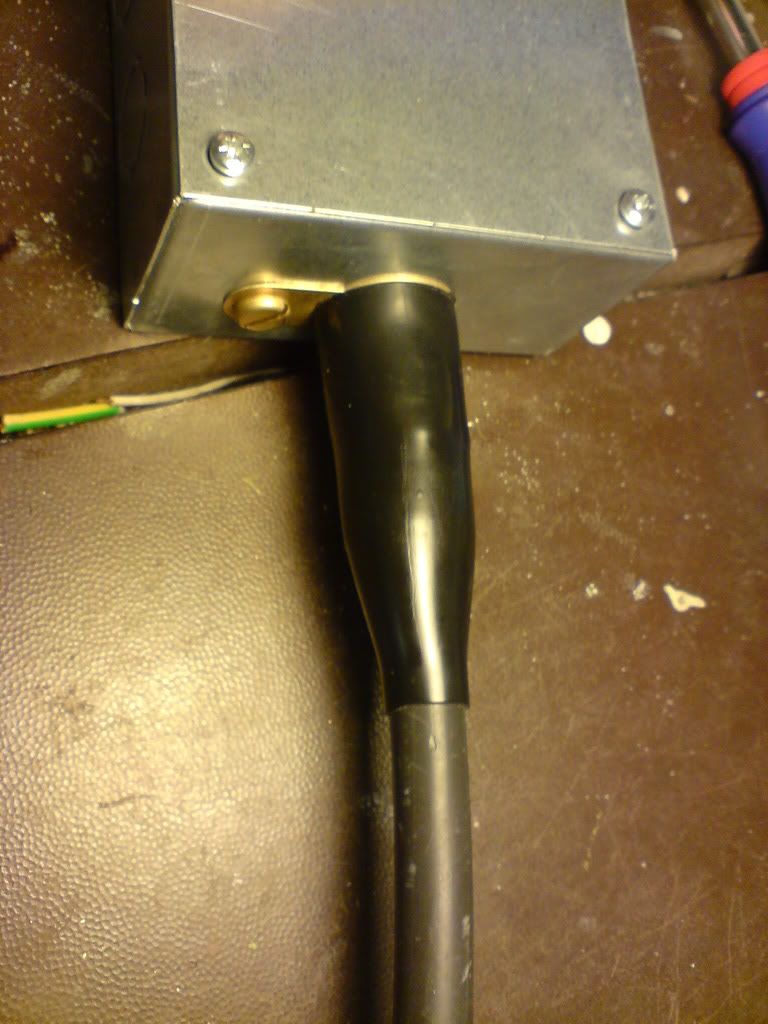Ok, please explain how I can do a proper DIY job (that won't end up costing more than getting an electricain to do it)
OK.
I want to put a light in a garden shed.
Which will be fixed, and therefore within the scope of the Building Regulations.
I am thinking of buying a length of armoured cable,
You need to read these to determine what size cable, but if you're going to the effort of digging a trench you might as well install 10mm² or even 16mm² if the shed is some distance away, then you'll be OK if ever your requirements increase.
run it from the house, under the floor through a trench in the garden to the shed
http://www.tlc-direct.co.uk/Book/7.13.3.htm
A buried cable is fixed, and therefore within the scope of the Building Regulations.
and then put a plug on the house end
No - put a switched FCU on the socket circuit and supply the SWA from that. You'll need a good solid enclosure (a regular pattress won't do) to take the gland, or a box just for terminating the SWA in, and somewhere unobtrusive, as they aren't the nicest looking of things:
and a socket on the shed end to plug a light into.
No - again terminate the SWA in a suitable enclosure and take a cable from there to the light switch.
Any socket would need to be fixed anyway, and therefore within the scope of the Building Regulations.
In effect it is like a fixed extension lead.
Yup - fixed. Part P applies to
any work whatsoever on fixed electrical cables or fixed electrical equipment located on the consumer’s side of the electricity supply meter which operate at low or extra-low voltage and are—
(a) in or attached to a dwelling;
(b) in the common parts of a building serving one or more dwellings, but excluding power supplies to lifts;
(c) in a building that receives its electricity from a source located within or shared with a dwelling; or
(d) in a garden or in or on land associated with a building where the electricity is from a source located within or shared with a dwelling.
As the cable is not actually wired in to the house electrics, can I do this without needing any checks or certificate from an electrician?
You should check the cable for continuity, polarity and fault loop resistance and insulation resistance, and as part of the continuity tests verify that the live & neutral resistance is what you'd expect given its length.
http://www.tlc-direct.co.uk/Book/8.1.1.htm
You'll need to hire the test equipment.
Unlikely, but just in case - if you have any
extraneous-conductive-parts in the shed and you have a
TN-C-S / PME supply you should think about if and how to export the earth to the shed:
http://electrical.theiet.org/wiring-matters/16/elect-inst-outdoors.cfm?type=pdf
Now, whether doing it properly will cost more than using an electrician I don't know, but if it does then so be it - I'm afraid that a substandard bodge is not acceptable. Installation challenges don't go away if you try and use a plug & socket, they get worse. Testing doesn't go away if you try and use a plug & socket - the rules of physics remain the same and therefore the reasons for doing it remain.


